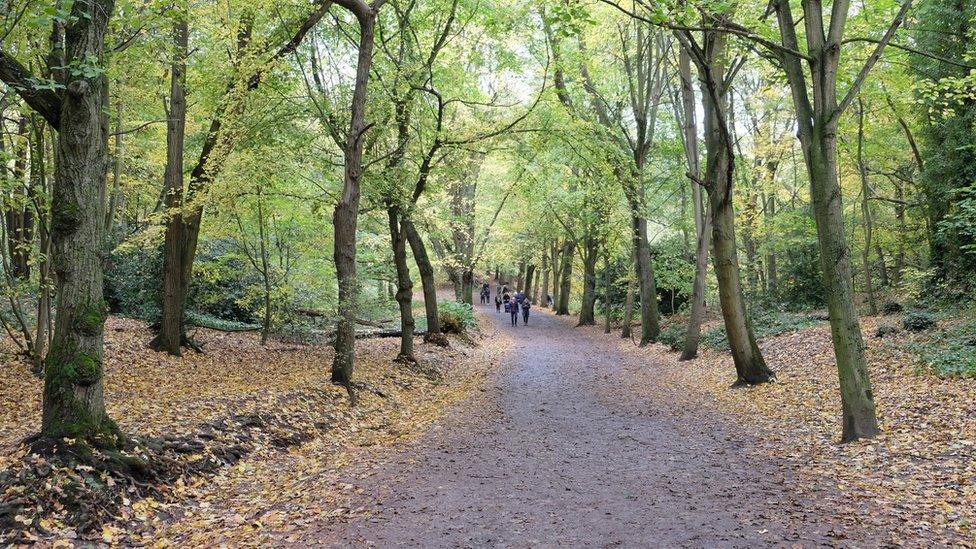Why do towns and cities have more trees than the countryside?
- Published

Tree numbers in London get a big boost from areas like Hamstead Heath
You might think towns and cities are just made up of offices and houses in the UK, but that's not quite true. They're also home to a large number of trees.
Camden and Croydon in London are among the top 20 places in England and Wales with the most trees.
However, places like the Lake District and the Yorkshire Dales, which are more rural, had some of the least.
Gardens help to boost the numbers in urban areas, while farmland in the rural places explain some of the low numbers.
The findings are part of a research project led by aerial survey company Bluesky International who enlisted the help of mapping experts from a company called Esri UK.
Most of the trees in the UK are concentrated in the south of the country. Surrey Heath in London has the highest percentage.
South Holland in Lincolnshire has the lowest, with Boston which neighbours the district, coming in at a close second.
"These areas were swept of trees for farming and have never recovered," says Dr Paul Brindley, who is an expert in trees and planning at Sheffield University's Department of Landscape Architecture.
And it isn't just farmland that's affected the number of trees in certain parts of the UK. Trees have been used for lots of purposes for many years, from wood used for fuel to the building of mines.
Trees benefit humans and the environment in lots of different ways and working out where the trees are in the country can help us to assess their full impact.
- Published27 May 2023
- Published1 December 2019
- Published15 January 2020
